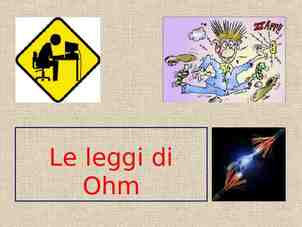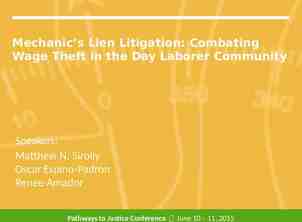March 2008 doc.: IEEE 802.11-08/0351r2 New Evidence that
19 Slides561.00 KB

March 2008 doc.: IEEE 802.11-08/0351r2 New Evidence that 11n Greenfield Devices Causes False RADAR Detections on DFS Channels Authors: Name Date: 2008-03-17 Affiliation Address Phone email Douglas Chan Cisco Systems 408-527-9344 [email protected] Lian Jiang Cisco Systems 408-853-1899 [email protected] Brian Hart Cisco Systems 408-525-3346 [email protected] Luke Qian Cisco Systems 170 West Tasman Drive, San Jose, CA 95134 170 West Tasman Drive, San Jose, CA 95134 170 West Tasman Drive, San Jose, CA 95134 4125 Highlander Parkway Richfield , OH 44286 330-523-2051 [email protected] Jan Kruys Cisco Systems Haarlerbergpark, Haarlerbergweg 13-19, Amsterdam, Netherlands 1101 CH 31-20-357-2447 [email protected] Malik Audeh Tropos Networks 408-331-6835 [email protected] Jorjeta Jetcheva Firetide, Inc. 408-355-7215 [email protected] Stephen Rayment BelAir Networks 613-254-7070 x112 srayment@belairnetworks .com Peter Loc Marvell Semiconductors Toshiba 555 Del Rey Ave Sunnyvale, CA 94085 16795 Lark Ave, Suite 200 Los Gatos, CA 9503 603 March Road Kanata ON Canada K2K 2M5 5488 Marvell Lane Santa Clara, CA 95054 1, Komukai Toshiba-cho, Saiwai-ku, Kawasaki 212-8582, JAPAN 408-222-9148 [email protected] 81-44-549-2433 [email protected] p Tomoko Adachi Submission Slide 1 Chan et al. (Cisco Systems)

March 2008 doc.: IEEE 802.11-08/0351r2 Latest tests provide conclusive evidence that Greenfield causes false detects in 11a devices on DFS channels Since D2.0, we’ve presented tests that showed Greenfield transmissions can cause false detects in 11a devices on DFS channels 07/0329r2 (Mar 2007) and 07/2849r0 (Nov 2007) showed software MATLAB generated GF signals and those of VoIP traffic patterns cause false detects on 11a devices from different vendors There were questions if this issue exists with GF transmissions by actual 11n hardware So we performed tests with real VoIP traffic on WiFi certified Draft 11n Testbed devices and observed the same intensity of false detects This is documented in 08/0301r1 and presented at the TGn pre-meeting last week Because these tests involved one VoIP codec and were performed in a screen room, there were questions whether the codec was cherry-picked and whether the screen room represented real-world environment Over the weekend, we performed the same tests with multiple different VoIP codecs and also on an open-space of an operating 11a deployed network We observed the SAME INTENSITY of false detects on 11a devices This new evidence dispels any uncertainty raised by doubters of this effect. We can safely conclude that GF on DFS is indeed a real and common problem Submission Slide 2 Chan et al. (Cisco Systems)

March 2008 doc.: IEEE 802.11-08/0351r2 Latest tests with WiFi draft 11n testbed devices show GF-DFS problem is beyond theoretical and commonly occurs Test Setup: Vendor Y Vendor X (HT Greenfield Client (802.11a device) on laptop) Neighboring APs in range but on different channels Vendor X Vendor Z Bi-directional VoIP streams (HT Greenfield AP) WAN (802.11a device) Radar Detects!!! Channel 52 Vendor Y (HT Greenfield Client Vendor X on laptop) (802.11a device) 11a clients generating real over the air network traffic Channel 52 Submission Slide 3 Chan et al. (Cisco Systems)

March 2008 doc.: IEEE 802.11-08/0351r2 Same intensity of false detects with different VoIP codecs and open real WLAN environment More details on the test and setup: VoIP streams were generated by IxChariot, industry designated network traffic generation and testing tool for WiFi certifications Codec used include G.711U, G.723.1 (MPMLQ), G.723.1 (ACELP) and G.726 with default settings. These codecs are very different and have large range of variations in their parameters, eg. packet size in bytes and time, interpacket spacing. (see backup slide for details) Tests performed with various MCS (eg. 3, 4, 5, 6, 7 and 15) False radar triggers began on every trial shortly after VoIP traffic began, eg. within 5 minutes Results did not change when laptop clients were loaded with ping traffic Vendor X Legacy APs did not have any record of falsing before tests commenced or between tests Submission Slide 4 Chan et al. (Cisco Systems)

March 2008 doc.: IEEE 802.11-08/0351r2 Sample screen shot of Chariot VoIP test Submission Slide 5 Chan et al. (Cisco Systems)

March 2008 doc.: IEEE 802.11-08/0351r2 Detrimental consequences expected from GF on DFS Bands Operations of legacy 802.11a networks which have no concept of Greenfield mode would be disrupted by their false detects from GF transmissions by moving to another channel each time Many mesh network architectures use the 5 GHz band for backhaul A single voice call using GF transmissions could bring down a mesh tree while it changes channel. A small number of GF APs using efficient channel selection can totally occupy the 5 GHz band and cause a mesh network outage. This type of behavior also facilitates possibilities of simple denial of service attacks There is nothing in the DFS regulations that indicate radar may be ignored if preceded by MAC protection. Therefore protection is ineffective for GF preambles in DFS bands. Submission Slide 6 Chan et al. (Cisco Systems)

March 2008 doc.: IEEE 802.11-08/0351r2 GF on DFS problem is not a late-breaking issue and is an industry-wide 802.11 concern In LB 97 (Draft 1.0), there were CIDs which pointed out that GF transmissions can be falsely detected by legacy devices in the DFS band as radar We performed experiments and presented a submission, 07/0329r2, in March 2007 (Orlando) to discuss the results Strawpolls showed a significant fraction of the TGn Coex Ad Hoc members are concerned with this problem, but more investigations should be done to be certain We performed a set of measurements with another legacy 11a receiver and presented them in submission 07/2849r0 in Nov 2007 (Atlanta) Strawpoll showed an even more significant fraction of the TGn Coex Ad Hoc members – a majority – agreeing for a text change to address this We hypothesized and presented in Feb 2008 telecon with 08/0111r2 that the problem may be related to DFS requirement for detecting the bin-5 radar profile Now we show compelling and conclusive evidence of this problem Overall our tests have shown at least two different 11a chipsets and at least two different vendors that would have falsing issues due to software generated GF VoIP transmissions The problem is probably not limited to VoIP GF transmissions too This is an industry-wide 802.11 concern Submission Slide 7 Chan et al. (Cisco Systems)

March 2008 doc.: IEEE 802.11-08/0351r2 802.11n should be changed to prevent GF’s potentially disruptive effects to legacy 11a devices in the DFS bands There’re two options to solving this problem: 1. Prohibit Greenfield operations in DFS bands or 2. Define a suitable mechanism to prevent Greenfield operation in DFS bands in the presence of legacy 11a devices Preferred Submission – Simple to implement since it reuses existing 11n schemes to signal when GF can be used. – Involves only a software upgrade/change. – More importantly, this mechanism doesn’t affect 11n GF evolution path, as 11a devices get phased out in the next few years, GF wouldn’t be prevented from use due to this prohibition. – True to the definition of having a “greenfield”. Slide 8 Chan et al. (Cisco Systems)

March 2008 doc.: IEEE 802.11-08/0351r2 Illustration of Option 2’s proposed mechanism: AP detects non-HT OBSS (1/4) Operation on a DFS Band Covered by proposed text changes in 08/0302r5. HT Greenfield Transmissions HT Greenfield Transmissions Beacon HT Greenfield AP Non-HT AP HT Greenfield Clients During operations or when establishing a BSS, an HT Greenfield AP receives beacon from a non-HT AP, thus detecting a non-HT OBSS. Submission Slide 9 Chan et al. (Cisco Systems)

March 2008 doc.: IEEE 802.11-08/0351r2 Illustration of Option 2’s proposed mechanism: AP detects non-HT OBSS (2/4) Operation on a DFS Band Covered by proposed text changes in 08/0302r5. Beacon HT Greenfield AP Non-HT AP HT Information Element OBSS Non-HT STAs Present 0 Submission 1 HT Greenfield AP sets its Greenfield support bit from 1 to 0 and OBSS Non-HT STAs Present bit from 0 to 1. Slide 10 Chan et al. (Cisco Systems)

March 2008 doc.: IEEE 802.11-08/0351r2 Illustration of Option 2’s proposed mechanism: AP detects non-HT OBSS (3/4) Operation on a DFS Band Covered by proposed text changes in 08/0302r5. HT Mixed Mode Transmissions HT Mixed Mode Transmissions Beacon HT Greenfield AP Non-HT AP HT Greenfield Clients Greenfield transmissions are then suppressed across this BSS. Non-HT OBSS is not disrupted by 11n BSS. Submission Slide 11 Chan et al. (Cisco Systems)

March 2008 doc.: IEEE 802.11-08/0351r2 Illustration of Option 2’s proposed mechanism: AP detects non-HT OBSS (4/4) Operation on a DFS Band Covered by proposed text changes in 08/0302r5. After waiting 30 min HT Greenfield AP Non-HT AP HT Information Element OBSS Non-HT STAs Present 1 Submission 0 If non-HT AP does not exist anymore, HT Greenfield AP can revert to its previous settings after thirty minutes. (Thirty min is a value defined as a the MIB variable that has range from 30 min to 48 hrs.) Slide 12 Chan et al. (Cisco Systems)

March 2008 doc.: IEEE 802.11-08/0351r2 Proposed prevention mechanism is simple and low impact to existing 11n implementations Merits of the proposed prevention mechanism Simple to implement and deploy via a software upgrade No monitoring or scanning on clients at all Monitoring of non-HT OBSS only on the AP Nothing required of clients other than changing their behavior according to AP’s beacon (which is the default and expected behavior for 11n STAs), and disabling GF for other (i.e. DLS) links on DFS channels when GF is disabled by the AP No new fields but re-uses existing 11n bits and signaling schemes Minor changes from D2.0 behavior Preserves 11n GF evolution path Achieves true definition of having a “greenfield”. Submission Slide 13 Chan et al. (Cisco Systems)

March 2008 doc.: IEEE 802.11-08/0351r2 References “Compliance Measurement Procedures for Unlicensed-national Information Infrastructure Devices Operating In The 5250-5350 Mhz and 5470-5725 Mhz Bands Incorporating Dynamic Frequency Selection”, Appendix to Revision of Parts 2 and 15 of the Commission’s Rules to Permit Unlicensed National Information Infrastructure (U-NII) devices in the 5 GHz band, FCC 06-96, June 30, 2006. Submission 07/0329r2 Submission 07/2849r0 Submission 08/0111r2 Submission 08/0301r0 Submission 08/0302r0 Submission Slide 14 Chan et al. (Cisco Systems)

March 2008 doc.: IEEE 802.11-08/0351r2 Backup slides Submission Slide 15 Chan et al. (Cisco Systems)

March 2008 doc.: IEEE 802.11-08/0351r2 Default Parameters of VoIP Codecs show large variations Excerpted from http://www.cisco.com/en/US/tech/tk652/tk698/technologies tech note09186a0080094ae2.shtml Slide 16 Submission Chan et al. (Cisco Systems)

March 2008 doc.: IEEE 802.11-08/0351r2 Excerpted from Nov 2007 (Atlanta) Coex Ad Hoc Minutes: Submission Slide 17 Chan et al. (Cisco Systems)

March 2008 doc.: IEEE 802.11-08/0351r2 Recap of previous investigations on this issue Submission Slide 18 Chan et al. (Cisco Systems)

March 2008 doc.: IEEE 802.11-08/0351r2 Recap of previous investigations on this issue Submission Slide 19 Chan et al. (Cisco Systems)






